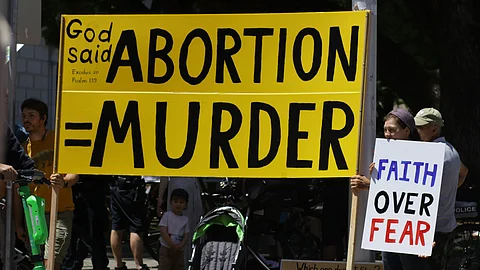At another point, Darnel speculated on the livestreamed video whether someone — it was unclear whom he was referring to — was a well-known, Washington, D.C.-based abortion rights activist. Then he changed his mind: “Oh wait, we don’t know — we don’t know who she is,” he said.
Darnel summarily dismissed any potential concerns with his behavior. In a message to KFF Health News, he asked, given his opposition to abortion, why would he “be concerned with the privacy of the murderers or the corrupted police who sought to protect those murderers?” Days later, asked about a different subject, he added that these concerns are raised only against anti-abortion protesters.
It’s not illegal in Washington, D.C., to film people in public without their consent, but the progressive anti-abortion types are “very media-oriented and they’re very noisy and aggressive,” said Megan S., who helps run a volunteer group that escorts patients to appointments. She and other clinic escort volunteers are very aware of the risks of being identifiable. (Megan S. withheld her last name to protect herself from such risks.)
Exposing or potentially misrepresenting identities became a thorny point during the trial on the October 2020 obstruction, at which both Darnel and Handy were defendants.
The proceedings were marked by multiple clashes pitting expression and publicity against protecting courtroom deliberations.
Some pro-life activists, who Bukovinac maintained were unaffiliated with the progressives, protested outside the courthouse when jury selection began.
Once the trial began, the conflicts continued, with the judge raising concerns that activists’ audible comments constituted witness tampering, Bukovinac said. The trial record showed the judge ultimately granted requests from prosecutors to shield witnesses’ identities and restrict the dissemination of discovery material to only the defense team members.


